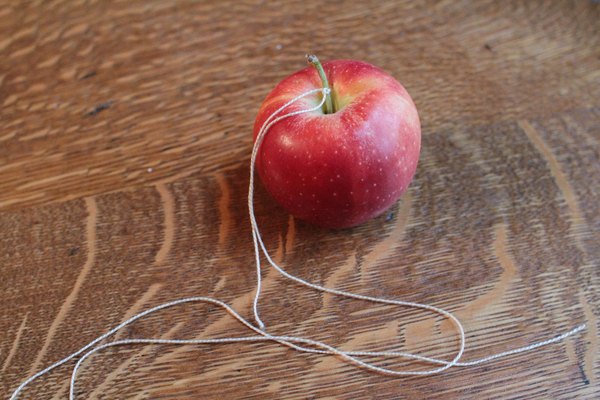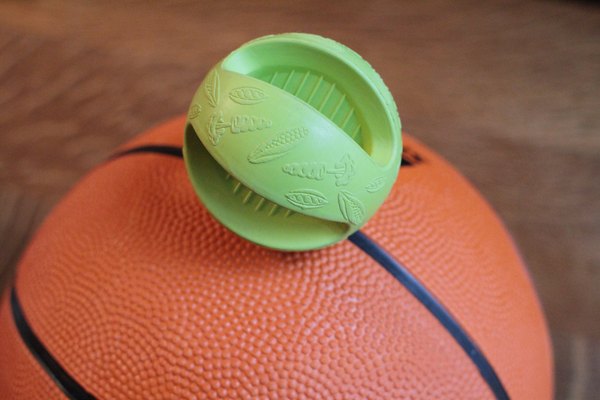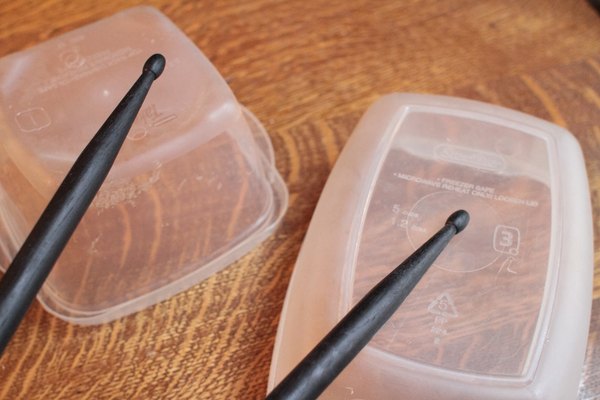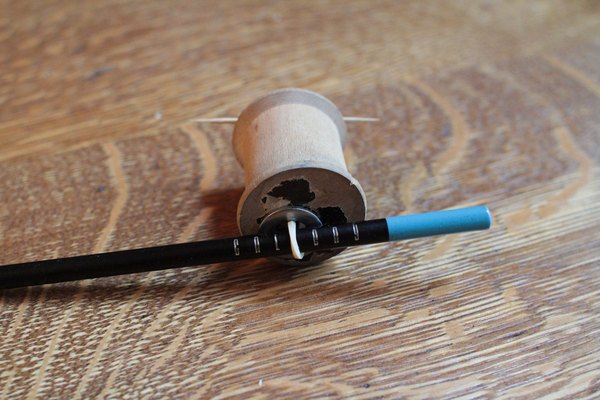
Kinetic energy is energy in motion. It is the opposite of stored, or potential, energy. Kinetic energy can be transferred between objects or changed into potential energy. Kids love seeing demonstrations of kinetic energy in action. These four simple experiments show children the effects of kinetic energy and how it is transferred between objects.
Apple on a String

Tie a piece of string onto the stem of an apple. Tie the string to a high place so that the apple is at the same height as your forehead. Give the apple room to swing back and forth. Standing several feet away and pull the apple towards you until it touches your forehead. Let go and it will swing away from you. Stand completely still and watch the apple as it then swings back towards you. The apple will not hit you in the face, although it looks like it will. Some of the kinetic energy that causes the apple to move is now converted to potential energy due to gravity. This causes the apple to slow down as it continues to swing.
Ball Experiment

Find a large, heavy ball and a small, light ball for this experiment. You'll need a lot of room, so consider taking this activity outdoors. Hold the large ball in one hand. Place the smaller ball on top and hold it still. Take your hands off of both balls at the same time. The largest ball hits the ground and the smallest ball hits the larger one and bounces into the air. This happens because kinetic energy has been transferred from the larger ball to the smaller.
Drum and Drumsticks

Kinetic energy can be transferred from one object to another in this drum experiment. This can be done with a real drum and drumstick, or a large container and two sticks. Hit one drumstick with the other and note the sound it makes. Put one drumstick on the surface of the drum while holding the other stick above the drum. Hit the center of the lower drumstick with the drumstick being held above the drum. The drum should make a sound even though it hasn’t been hit directly with a drumstick because of the transfer of kinetic energy.
Spool Racers

For this experiment you will need a wooden spool, flat toothpick, a rubber band, tape, one large and one small metal washer and a pencil that has never been sharpened. Attach the rubber band to the middle of the toothpick by pulling one end of the rubber band through the other until it is tight around the toothpick. Thread the toothpick and rubber band through the center of the spool, making sure the toothpick lays across the end of the spool. Cut or break the ends of the toothpick so they do not go past the edge of the spool. Tape the toothpick in place. Next, place the other end of the rubber band through the large washer and then the small one, sliding the pencil through at the end. Spin the pencil to wind the rubber band, set the spool on the floor and let it go. Explain to your students that kinetic energy will send the spool racing across the floor.
References
About the Author
Rebecca Brogdon has been writing since 2003. In 2011 she began writing online instructional articles in the areas of family, education and parenting. Her blog, The Brogdon Bunch, focuses on parenting, homeschooling and adoption. Brogdon graduated from William Carey University with a Bachelor of Science in elementary education.
